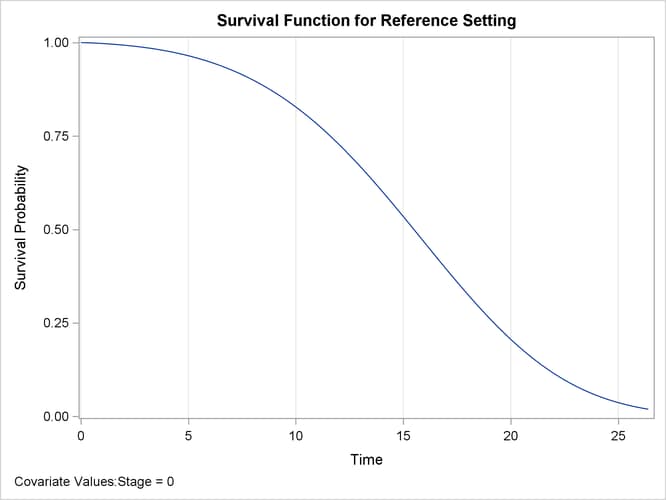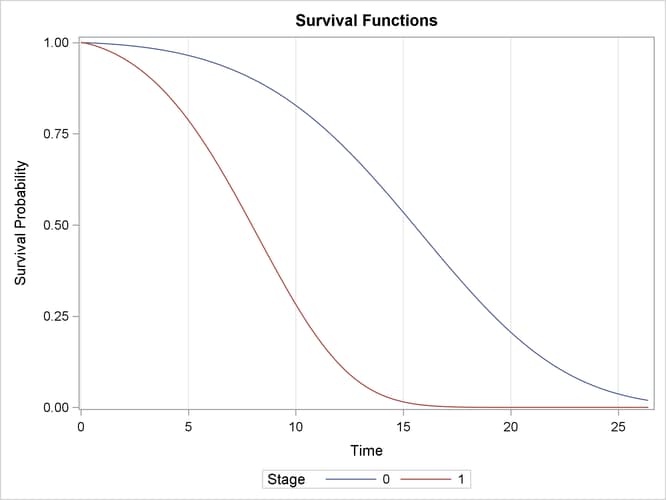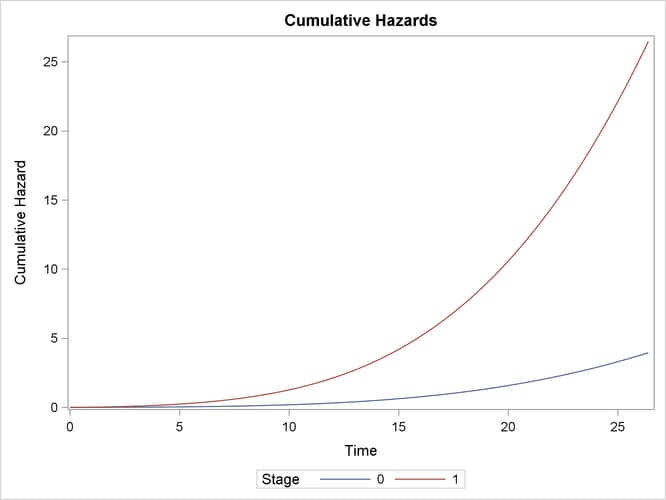The ICPHREG Procedure
Example 63.2 Plotting Predicted Survival and Cumulative Hazard Functions
This example illustrates how to plot the predicted survival and cumulative hazard functions for specified covariate patterns.
The following statements request a plot of the estimated baseline survival function:
ods graphics on; proc icphreg data=hiv plot=surv; class Stage / desc; model (Left, Right) = Stage / basehaz=splines; run;
Output 63.2.1 shows the predicted survival curve at the reference level.
Output 63.2.1: Estimated Survival Curve for the Reference Set

To produce curves for general covariate patterns, you can specify the COVARIATES= option in the BASELINE statement. The following
statements create observations for two levels of Stage and plot the corresponding predicted curves:
data cov; Stage=0; output; Stage=1; output; run; proc icphreg data=hiv plot=surv; class Stage / desc; model (Left, Right) = Stage / basehaz=splines; baseline covariates=cov; run;
Under the proportional hazards assumption, the two curves do not cross each other. As shown in Output 63.2.2, patients at Stage 1 have much lower survival rates than patients at Stage 0.
Output 63.2.2: Predicted Survival Curves for Specified Covariate Patterns

The following statements request a plot of the predicted cumulative hazard functions for the two levels of Stage:
proc icphreg data=hiv plot=cumhaz; class Stage / desc; model (Left, Right) = Stage / basehaz=splines; baseline covariates=cov; run;
Output 63.2.3 shows the plot.
Output 63.2.3: Predicted Cumulative Hazards for Specified Covariate Patterns

